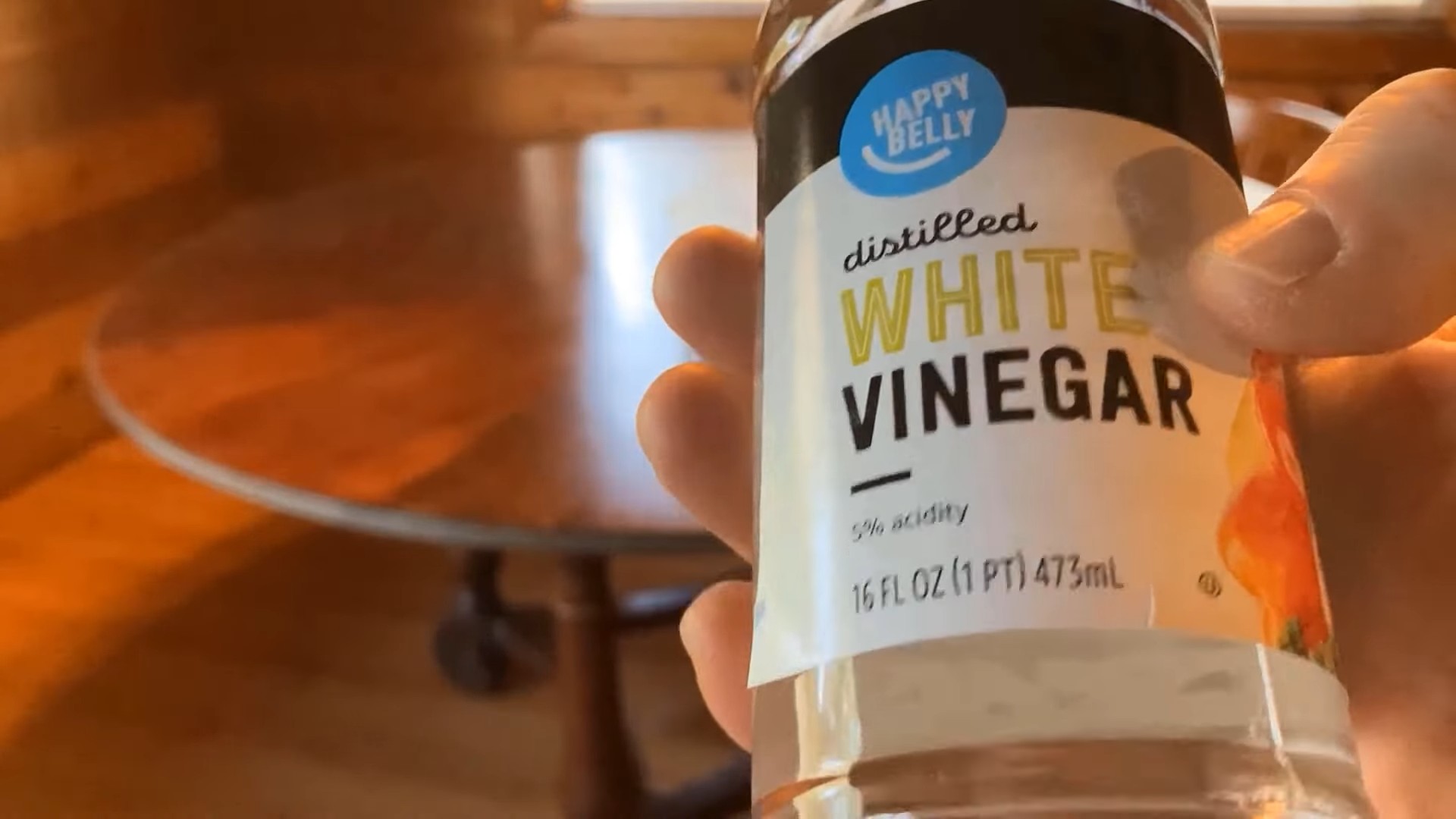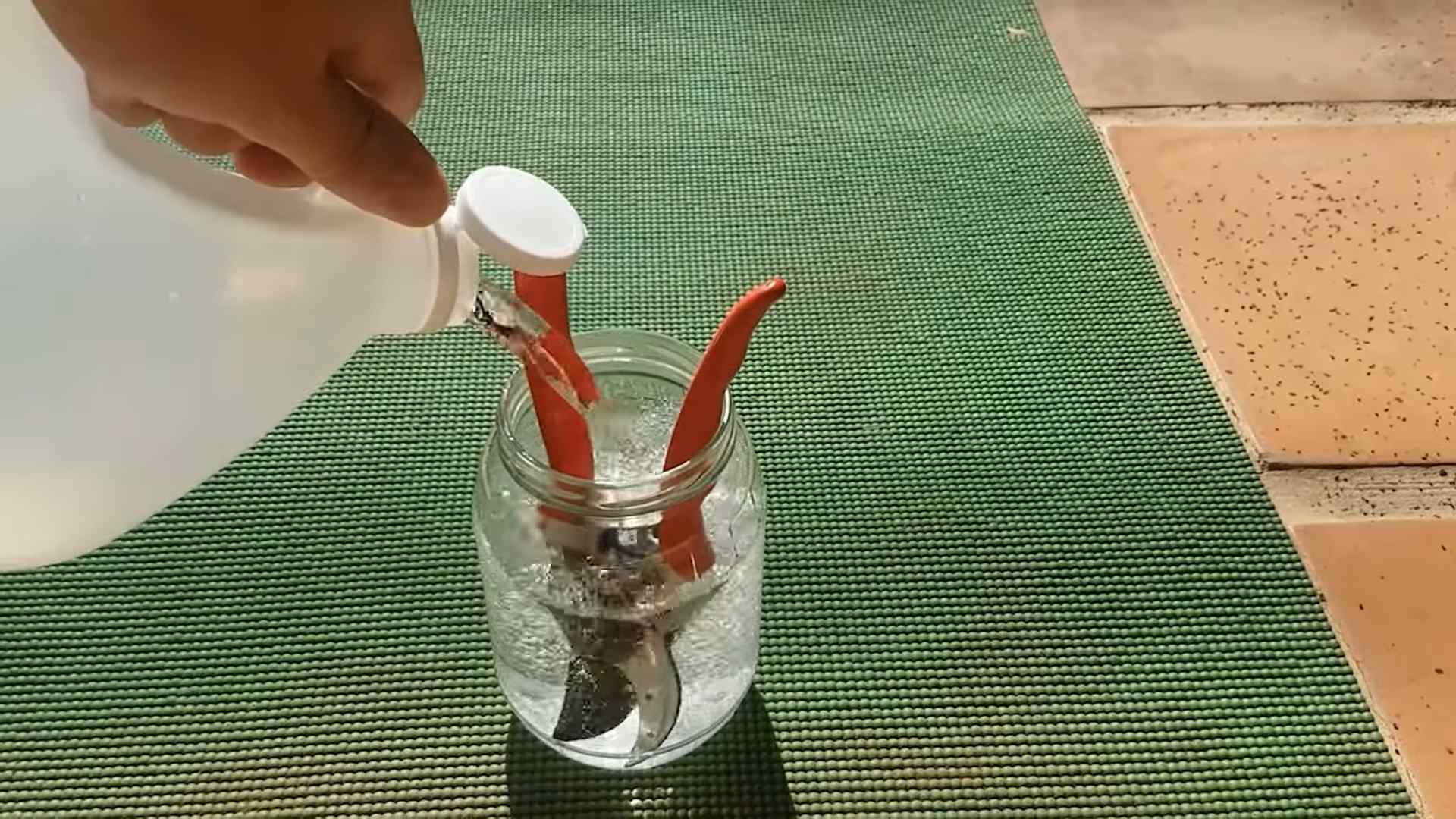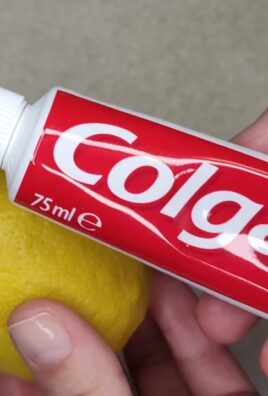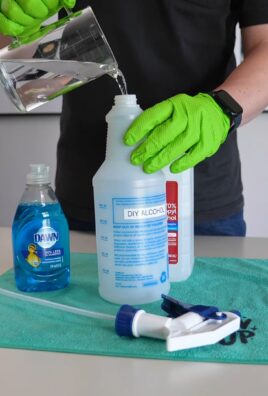White vinegar cleaning hacks are about to become your new best friend! Seriously, are you tired of spending a fortune on harsh chemical cleaners that promise the world but often underdeliver? I know I was! That’s why I dove headfirst into the world of DIY cleaning, and let me tell you, the results have been amazing.
Vinegar, a staple in kitchens for centuries, has a surprisingly rich history beyond just culinary uses. From ancient civilizations using it as a preservative to its role in folk remedies, vinegar has always been valued for its versatile properties. Now, we’re rediscovering its power as a natural and effective cleaning agent.
But why should you embrace these white vinegar cleaning hacks? Well, for starters, it’s incredibly budget-friendly. Forget those expensive specialty cleaners – a simple bottle of white vinegar can tackle a multitude of cleaning tasks around your home. More importantly, it’s a much safer alternative to harsh chemicals, especially if you have kids or pets. Plus, it’s environmentally friendly! So, are you ready to unlock the cleaning potential of this humble household staple? Let’s dive in and discover some amazing DIY tricks that will leave your home sparkling clean, naturally!

Unlocking the Power of White Vinegar: My Favorite DIY Cleaning Hacks
Hey everyone! I’m so excited to share some of my absolute favorite cleaning hacks using something you probably already have in your pantry: white vinegar! It’s cheap, effective, and surprisingly versatile. Forget those expensive, chemical-laden cleaners – let’s get cleaning with the magic of vinegar!
Why White Vinegar?
Before we dive in, let’s quickly talk about why white vinegar is such a cleaning superstar. It’s a mild acid, which means it’s great at dissolving grime, mineral deposits, and even some types of mold. Plus, it’s a natural deodorizer, leaving your home smelling fresh (once the vinegar smell dissipates, of course!).
General Tips for Using White Vinegar
* Dilution is Key: Always dilute white vinegar with water, especially on delicate surfaces. A 50/50 solution is usually a good starting point.
* Test First: Before cleaning an entire surface, test the vinegar solution on a small, inconspicuous area to make sure it doesn’t cause any damage or discoloration.
* Ventilation is Important: Make sure you have good ventilation when cleaning with vinegar, as the fumes can be a bit strong. Open windows or turn on a fan.
* Don’t Mix with Bleach: This is super important! Mixing vinegar with bleach creates toxic chlorine gas, which is extremely dangerous.
* Embrace the Smell: The vinegar smell might be a little strong at first, but it dissipates quickly. You can also add a few drops of your favorite essential oil to the solution to mask the scent.
Hack 1: Sparkling Clean Showerheads
Hard water deposits can really clog up your showerhead, reducing water pressure and making your shower less enjoyable. Here’s how to fix it with vinegar:
1. Gather Your Supplies: You’ll need white vinegar, a plastic bag (a sandwich bag works well), a rubber band or twist tie, and an old toothbrush.
2. Fill the Bag: Pour enough white vinegar into the plastic bag to completely submerge the showerhead.
3. Secure the Bag: Carefully attach the bag to the showerhead, making sure the showerhead is fully immersed in the vinegar. Use the rubber band or twist tie to secure the bag tightly.
4. Soak Overnight: Let the showerhead soak in the vinegar overnight. This will give the vinegar plenty of time to dissolve the mineral deposits.
5. Remove and Rinse: The next morning, remove the bag and discard the vinegar.
6. Scrub Away Residue: Use the old toothbrush to scrub away any remaining mineral deposits.
7. Flush the Showerhead: Turn on the shower and let the water run for a few minutes to flush out any remaining vinegar and debris.
8. Enjoy Your Sparkling Showerhead: You should now have a showerhead with much better water pressure and a sparkling clean finish!
Hack 2: Deodorizing Your Washing Machine
Your washing machine can get pretty funky over time, especially if you use liquid detergent or fabric softener. Vinegar to the rescue!
1. Empty the Washing Machine: Make sure your washing machine is completely empty.
2. Add Vinegar: Pour 2 cups of white vinegar directly into the washing machine drum.
3. Run a Hot Cycle: Run a full hot water cycle with no laundry detergent.
4. Repeat Monthly: I like to do this once a month to keep my washing machine fresh and clean.
Hack 3: Cleaning Your Microwave Like a Pro
Microwave splatters are the worst! This vinegar trick makes cleaning them a breeze.
1. Combine Vinegar and Water: In a microwave-safe bowl, combine 1 cup of water and 1/4 cup of white vinegar.
2. Microwave the Mixture: Microwave the mixture on high for 5 minutes. The steam will loosen the grime and splatters.
3. Let it Sit: Carefully remove the bowl (it will be hot!) and let the microwave sit for another 5 minutes with the door closed. This allows the steam to continue working its magic.
4. Wipe Clean: Use a damp cloth or sponge to easily wipe away the loosened grime. You’ll be amazed at how easily it comes off!
Hack 4: Removing Hard Water Stains from Faucets and Sinks
Those pesky white spots around your faucets and sinks are hard water stains. Here’s how to get rid of them:
1. Soak a Cloth: Soak a clean cloth or paper towel in white vinegar.
2. Apply to Stains: Wrap the vinegar-soaked cloth around the faucet or sink area with hard water stains.
3. Let it Sit: Let the cloth sit for at least 30 minutes, or even longer for stubborn stains.
4. Scrub and Rinse: Remove the cloth and scrub the area with a non-abrasive sponge or cloth. Rinse thoroughly with water.
5. Dry and Shine: Dry the area with a clean cloth to prevent new water spots from forming.
Hack 5: Cleaning Your Coffee Maker
Keep your coffee maker brewing delicious coffee by cleaning it regularly with vinegar.
1. Fill the Reservoir: Fill the coffee maker reservoir with a 50/50 solution of white vinegar and water.
2. Brew Halfway: Start the brewing cycle and let it brew halfway through.
3. Let it Sit: Turn off the coffee maker and let the vinegar solution sit in the reservoir for 30 minutes. This will allow the vinegar to dissolve any mineral deposits.
4. Finish Brewing: Turn the coffee maker back on and finish the brewing cycle.
5. Rinse with Water: Run two full cycles with fresh water to rinse out any remaining vinegar.
Hack 6: Freshening Up Your Dishwasher
Just like your washing machine, your dishwasher can also benefit from a vinegar cleaning.
1. Empty the Dishwasher: Make sure your dishwasher is completely empty.
2. Place Vinegar in a Bowl: Place a dishwasher-safe bowl filled with 1 cup of white vinegar on the top rack of the dishwasher.
3. Run a Hot Cycle: Run a hot water cycle with no detergent.
4. Repeat Monthly: I recommend doing this once a month to keep your dishwasher fresh and clean.
Hack 7: Cleaning Windows and Mirrors for a Streak-Free Shine
Forget expensive window cleaners! Vinegar works wonders on glass surfaces.
1. Mix Your Solution: In a spray bottle, combine equal parts white vinegar and water.
2. Spray the Surface: Spray the vinegar solution onto the window or mirror.
3. Wipe Clean: Wipe the surface with a clean microfiber cloth. Microfiber cloths are great for streak-free cleaning.
4. Enjoy the Shine: Admire your sparkling clean windows and mirrors!
Hack 8: Removing Stickers and Adhesive Residue
Stickers and adhesive residue can be a real pain to remove. Vinegar can help!
1. Soak the Area: Soak a cloth or paper towel in white vinegar and apply it to the sticker or adhesive residue.
2. Let it Sit: Let the vinegar soak for several minutes to soften the adhesive.
3. Peel or Scrape: Gently peel off the sticker or scrape away the adhesive residue with a plastic scraper or credit card.
4. Wipe Clean: Wipe the area with a clean, damp cloth to remove any remaining residue.
Hack 9: Cleaning Grout
Grout can get stained and dirty over time. Vinegar can help brighten it up.
1. Mix Your Solution: In a spray bottle, combine equal parts white vinegar and water.
2. Spray the Grout: Spray the vinegar solution onto the grout lines.
3. Let it Sit: Let the solution sit for 5-10 minutes.
4. Scrub the Grout: Use a grout brush or old toothbrush to scrub the grout lines.
5. Rinse with Water: Rinse the area thoroughly with water.
Hack 10: Freshening Up Your Cutting Boards
Cutting boards can harbor bacteria and odors. Vinegar can help sanitize and deodorize them.
1. Wipe with Vinegar: After washing your cutting board with soap and water, wipe it down with white vinegar.
2. Let it Air Dry: Let the cutting board air dry completely. The vinegar will help kill bacteria and neutralize odors.
Important Considerations: Surfaces to Avoid
While white vinegar is a fantastic cleaner, there are some surfaces you should avoid using it on:
* Natural Stone: Marble, granite, and other natural stone surfaces can be damaged by the acidity of vinegar.
* Waxed Furniture: Vinegar can strip the wax finish from furniture.
* Electronics Screens:

Conclusion
So, there you have it! Unlocking the power of white vinegar cleaning hacks is not just about saving money; it’s about embracing a more sustainable and effective way to keep your home sparkling. We’ve explored a range of applications, from banishing stubborn hard water stains to deodorizing your washing machine, all with one simple, readily available ingredient.
Why is this a must-try? Because it works! White vinegar’s acidity naturally cuts through grease, grime, and mineral deposits, making it a formidable cleaning agent. Plus, it’s a non-toxic alternative to harsh chemical cleaners, making it safer for your family, your pets, and the environment. You’re not just cleaning; you’re contributing to a healthier living space.
But the beauty of these hacks lies in their adaptability. Feel free to experiment and find what works best for you. For instance, if you’re tackling a particularly stubborn stain, try letting the vinegar soak for a longer period. Or, if you prefer a more fragrant cleaning experience, infuse your vinegar solution with citrus peels or essential oils like lemon or lavender. Just remember to test any new solution on an inconspicuous area first to ensure it doesn’t damage the surface.
Consider these variations:
* Infused Vinegar for Added Scent: Add citrus peels (lemon, orange, grapefruit) or herbs (rosemary, thyme) to a jar of white vinegar. Let it steep for a few weeks, then strain and use as usual. This adds a subtle, natural fragrance to your cleaning.
* Vinegar and Baking Soda Power Duo: For clogged drains or extra-tough grime, combine vinegar with baking soda. The fizzing action helps to loosen debris and break down buildup.
* Vinegar as a Fabric Softener Alternative: Add 1/2 cup of white vinegar to your washing machine’s fabric softener dispenser. It will help to soften clothes and remove detergent residue without any harsh chemicals.
* Vinegar for Cleaning Electronics (with caution): Dampen a microfiber cloth with a diluted vinegar solution (equal parts vinegar and water) and gently wipe down screens and keyboards. Be sure to wring out the cloth thoroughly to avoid getting any liquid inside the device.
We’re confident that once you experience the cleaning prowess of white vinegar, you’ll wonder how you ever lived without it. It’s a game-changer for anyone looking to simplify their cleaning routine, reduce their reliance on harsh chemicals, and save money in the process.
So, what are you waiting for? Grab a bottle of white vinegar and put these hacks to the test! We’re eager to hear about your experiences. Share your before-and-after photos, your favorite vinegar cleaning tips, and any variations you’ve discovered in the comments below. Let’s build a community of vinegar-powered cleaning enthusiasts! Your insights could help others discover the amazing potential of this humble household staple. Let us know which of these white vinegar cleaning hacks worked best for you!
Frequently Asked Questions (FAQ)
Is white vinegar safe to use on all surfaces?
While white vinegar is a versatile cleaner, it’s not suitable for all surfaces. Avoid using it on natural stone surfaces like marble, granite, and limestone, as the acidity can etch and damage them. It’s also best to avoid using vinegar on waxed furniture, as it can strip the wax finish. Always test a small, inconspicuous area before applying vinegar to a larger surface. Also, avoid mixing vinegar with bleach, as this can create toxic chlorine gas.
What is the best type of white vinegar to use for cleaning?
Plain white distilled vinegar is the best choice for cleaning. It’s clear, inexpensive, and has a consistent acidity level (typically 5%). Avoid using flavored vinegars or cleaning vinegars with added ingredients, as these may leave behind residues or stains.
How do I get rid of the vinegar smell after cleaning?
The vinegar smell is temporary and usually dissipates within a few hours. To speed up the process, you can open windows to ventilate the area or use a fan. You can also add a few drops of essential oils (like lemon, lavender, or eucalyptus) to your vinegar solution to mask the smell. Another trick is to boil a pot of water with a few cinnamon sticks or citrus peels to freshen the air.
Can I use white vinegar to clean my coffee maker?
Yes, white vinegar is an excellent way to clean your coffee maker and remove mineral buildup. Fill the water reservoir with a solution of equal parts white vinegar and water. Run the coffee maker through a full brewing cycle. Then, run two cycles with fresh water to rinse away any remaining vinegar.
How often should I clean my washing machine with white vinegar?
It’s recommended to clean your washing machine with white vinegar every one to three months, depending on how frequently you use it. This will help to prevent the buildup of detergent residue, mold, and mildew, keeping your machine clean and fresh.
Can I use white vinegar to remove hard water stains from shower doors?
Absolutely! White vinegar is a highly effective solution for removing hard water stains from shower doors. Spray the shower doors with undiluted white vinegar and let it sit for 15-30 minutes. Then, scrub the doors with a sponge or brush and rinse thoroughly with water. For stubborn stains, you may need to repeat the process or use a stronger vinegar solution.
Is white vinegar safe for septic systems?
Yes, white vinegar is generally considered safe for septic systems. It’s a natural and biodegradable substance that won’t harm the beneficial bacteria in your septic tank. However, it’s important to use vinegar in moderation and avoid pouring large quantities down the drain at once.
Can I use white vinegar to clean my microwave?
Yes, cleaning your microwave with white vinegar is a simple and effective way to remove splatters and odors. Combine equal parts white vinegar and water in a microwave-safe bowl. Microwave on high for 5-10 minutes, or until the solution boils and the microwave is filled with steam. Let the bowl sit in the microwave for a few minutes to allow the steam to loosen any stuck-on food. Then, carefully remove the bowl and wipe down the interior of the microwave with a clean cloth.
What are some other uses for white vinegar besides cleaning?
White vinegar has a wide range of uses beyond cleaning, including:
* Weed killer: Spray undiluted white vinegar on weeds to kill them naturally.
* Laundry booster: Add 1/2 cup of white vinegar to your laundry to brighten colors and remove odors.
* Egg poaching: Add a tablespoon of white vinegar to the poaching water to help the egg whites coagulate.
* Jellyfish stings: Rinse a jellyfish sting with white vinegar to help relieve the pain.
* Fruit fly trap: Fill a small bowl with apple cider vinegar and a drop of dish soap to trap fruit flies.
Where can I buy white vinegar?
White vinegar is readily available at most grocery stores, supermarkets, and discount retailers. It’s typically located in the cleaning supplies aisle or the vinegar and oil section. You can also purchase white vinegar online from various retailers. It is one of the most accessible and affordable cleaning supplies available.




Leave a Comment